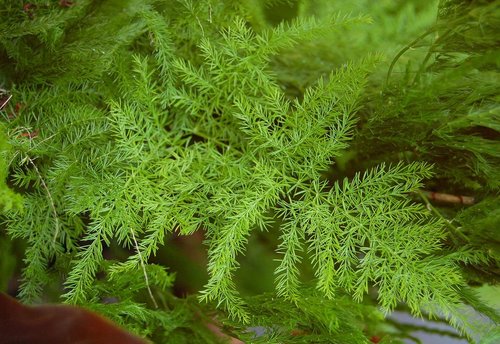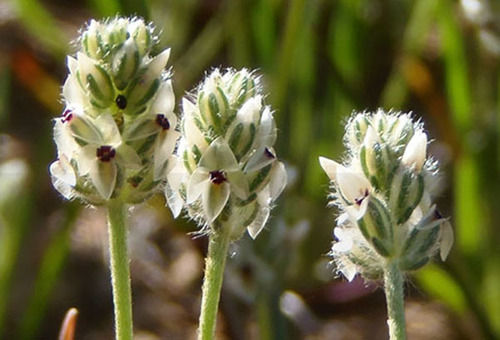Nepali Shatavari Plants

Nepali Shatavari Plants Price And Quantity
- 15000 Plant
- 4.00 - 6.00 INR/Plant
Nepali Shatavari Plants Trade Information
- 1000000 Plant Per Month
- 10 Days
- Contact us for information regarding our sample policy
- All India
Product Description
Cultivation : Nepali Shatavari Plants is common throughout the tropical & subtropical regions, specially central India. Also, it is found up to 1500 meter from the ground level in subtropical Himalayas. Naturally, the plant is xerophytic and opts the semi-arid to subtropical, cool atmosphere.
Climate & soil : Soil - black, well fertile & drained soil type is ideal for the cultivation. But, it can be cultivated in loose & medium black soil. Climate - crop responses nicely to hot & tropical climate. The plant prefers yearly average rainfall of 600 to 1000mm or less, of which 85 per cent is received throughout July - September. A perfectly dried fertile sandy-loam to average black soil, with a pH of 6 to 8 is the most suitable for its farming with staking support. This kind of plant can be grown in both open field and under shade, but very high moisture levels resulting root rotting.
Propagation material : Both root & seeds stumps can be utilized for propagation. Although, seeds are preferable because of high yield that makes up for low germination rate in farming. Seeds may be gathered from March - May once their shade changes from red to black.
Agriculture Technique
- Raising propagules : Seeds are sown throughout the April to may in perfectly prepared and raised beds of nursery containing good quantities of farmyard manure. The beds should perfectly be 10 m x 1m in size. Seeds are planted in lines 5cm aside and covered with a blend of farmyard manure and soil. The beds are slightly watered at constant intervals utilizing a rose water cane.
- Propagule rate & pre-treatment : Nearly 7 kg of seeds are needed for raising sprouting for one hectare of crop. In order to get early and great germination rate, pre-absorbing in water is necessary. Also, Higher germination is attained by absorbing the seeds in the urine of cow for one day. The germination begins after 20 days of planting and is done in one month.
Planting :
- Land preparation & fertilizer : The land has to be provided a deep disc plugging, followed by levelling and harrowing. The land is generally divided into plots, keeping single watering channel in between two rows of plots. Around 10 tones of well-decomposed farmyard manure are perfectly mixed in the soil 30 days prior to transplant. A fertilizer dose of 20 kg phosphate, 20 kg potash and 40 kg nitrogen per hectare could be applied for the best growth & excellent tuberous root production. 1/3 of nitrogen and whole dose of potash & phosphate should be placed 10 to 12 cm deep in the rows prior to transplant.
- Transplanting & optimum spacing : The sprouts are prepared for the transplantation after 50 to 60 days of planting. They are transplanted in land at the beginning of monsoon in July. Keeping the plant-to-plant difference at 60 cm. Optimum number of sprouts needed per hectare utilizing the recommended distance is around 150 000.
- Intercropping system : Nepali Shatavari Plants is commonly grown as a mono-crop, however it can be grown in inter spaces accessible in orchards that have low light interception. Plants require staking material, thus shrubs or poles serve for support.
Irrigation & Intercropping :
- The field is watered soon after sowing if there are no rains for 2 to 3 days.
- It can be developed in rain-fed condition and irrigated.
- On accessibility of water irrigation at the break of 25 to 30 days could be given.
- Regular weeding is needed throughout its early time of growth.
- Care should be taken in order to avoid any damage to growing sprigs during weeding. Completely, about 2 to 3 hand weeding is required so as to keep crop free of weeds.
Intercultural & maintenance practices : The balance 2/3 N is used in two similar split doses throughout September as well as in late February. The fertilizer is transmitted within the rows and blended in soil followed by watering process, in case of dry soil. This plant at the beginning grows gradually for two months, which keeps inter-row space indeed empty, allowing convenient weed growth. It is required to carry out hoeing and weeding operations so as to keep the land free of weeds for initial 60 days period. After 60 days, this plant grows enough to cover the inter row distances and prevents growth of weed.
Disease & Pest Control : No serious pests, insects, and disease have been accounted in this crop.
Plant Protection : No serious disease & pest has been recorded in this crop.
Harvesting : Crop maturity & harvesting:-
The crop matures in 1 1/2 years after sowing. Rabi season, i.e, November to December, is an ideal time for cuttings tuberous roots when the above-land parts begin turning pale yellow colours. The crop, when harvested in 1 1/2 years, yields about 4 to 5 tones per hectare, while harvesting after 1 year 8 months yields about 6 tones per hectare of tubers along with 35 kilogram hectare of seeds.
Yield & Cost of Cultivation : The tuberous root yields 15% to 20% of dry material by removing of outer wall. An average shade-dried tuberous root production of 4 to 5 tons/hectare is gotten from 1 1/2 years old plants under practical conditions. Comprising field preparation, cost of planting material, nursery rising, farmyard manure, cost of transplanting, peeling, harvesting, and processing for market, etc. The calculated yield of 1 1/2 years old crop of Shatavar is 4 to 5 tones per hectare, which can bring net returns of approx. Rs 1 to 1.25 lacs per hectare.
Post Harvesting : The harvested roots are completely washed preferably in flowing water, then, woody threads of inner side are removed with the split of roots. The thin root barks are removed by scraping with the help of a knife or incising them. In the conventional methodologies, the roots are also put in a basket of bamboo on a pot of boiled water for 5 to 10 minutes in order to make possible simple removal of thread & root bark. But this technique is indeed not needed when freshly gathered roots are peeled off. After that, this kind of roots are dried in the shade for 8 to 10 days. The fresh roots lose nearly 90 per cent of their weight after peeling as well as drying. If the peeling gets delayed, it becomes very much difficult afterwards. Value addition of root powder increases sale, marketability and price. The roots get damaged within three to four months if threads in not instantly removed.
Nepali Satavar Meterial available :
- Nepali Satavr Seeds
- Nepali Satavar Plant
- Nepali Sataver Dry Roots





